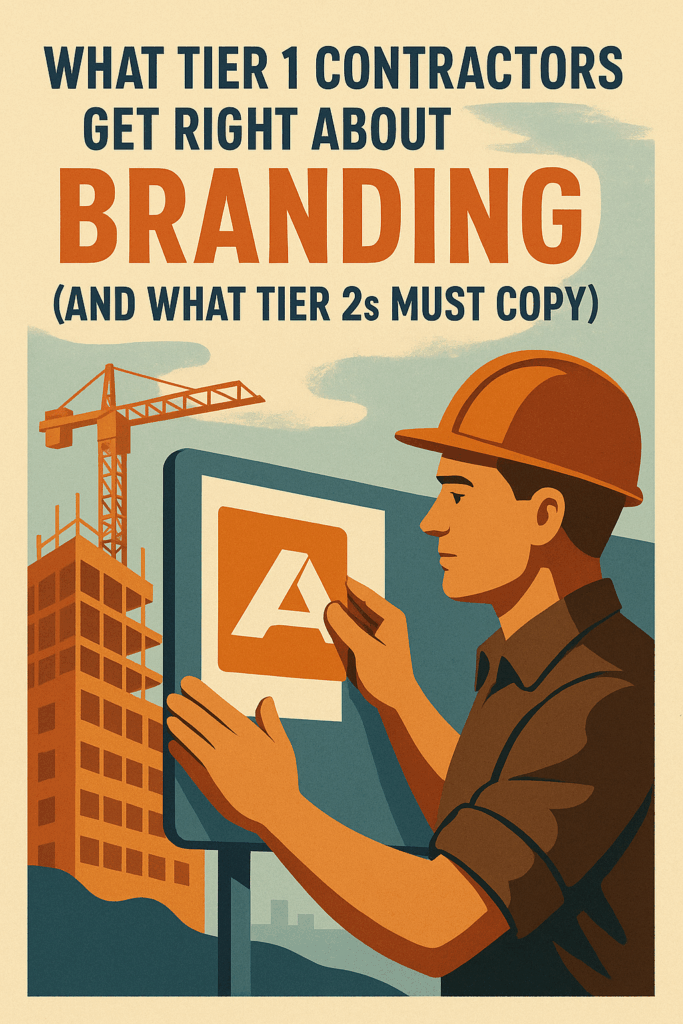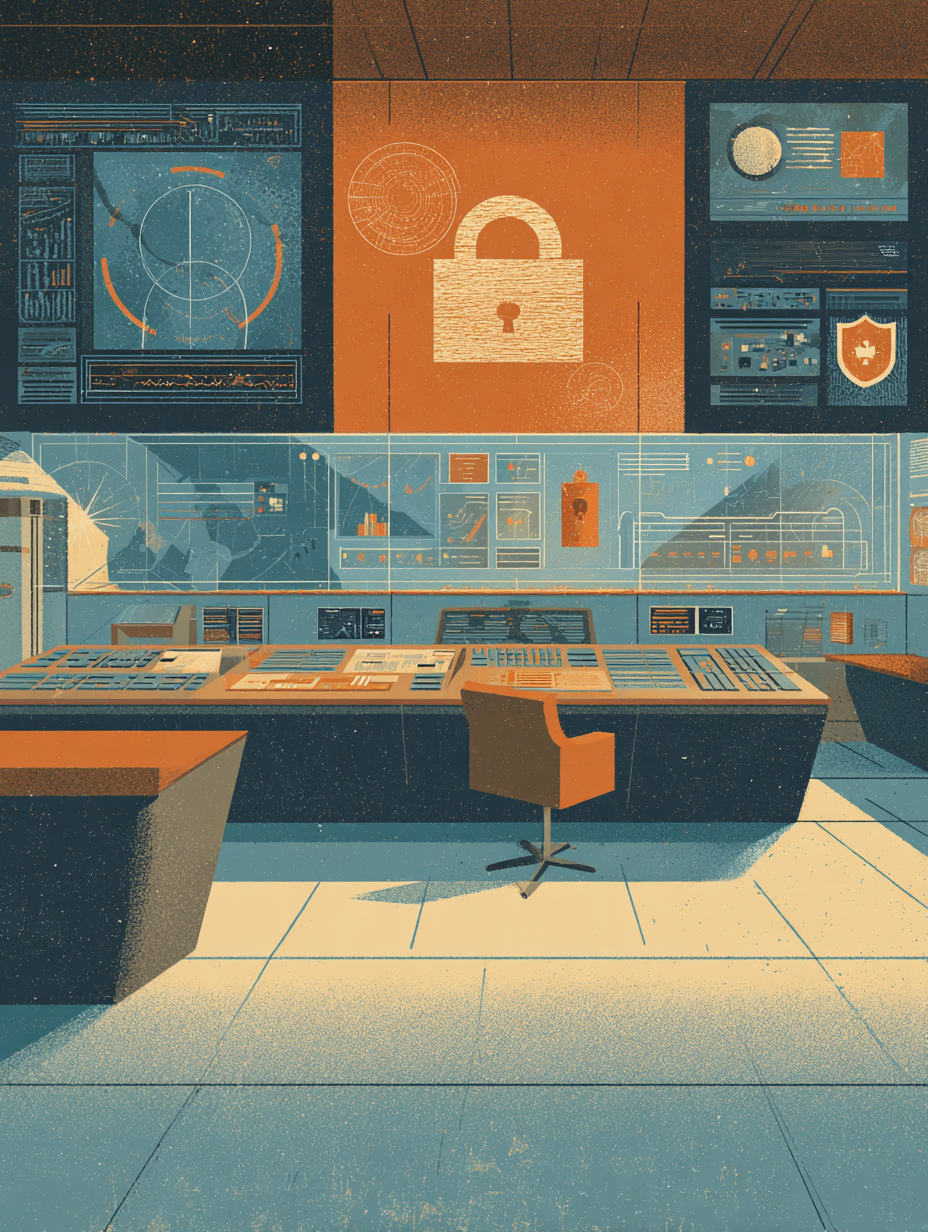You’re in the aerospace and defense game, and you’ve got the tech, the contracts, maybe even the pedigree.
But here’s the catch: you’re still playing second fiddle. It’s not because your product or service isn’t world-class—it’s because your brand isn’t.
While Tier 1 contractors dominate the narrative and win mindshare with ease, Tier 2s are often stuck fighting for scraps, overshadowed not by capability, but by perception.
The truth?
A strong brand is more than a logo or website—it’s your first line of defense. It’s what opens doors, shortens sales cycles, earns stakeholder trust, and defends your market position in a high-stakes, highly specialized industry.
I’m Viktor, a strategist with 13 years in the trenches—building brands, architecting million-dollar strategies, and helping companies go from overlooked to indispensable.
This guide is your blueprint for elevating your Tier 2 brand to Tier 1 status, using proven strategies that blend positioning, defensive marketing, and trust-building into a competitive advantage.
The Strategic Importance of Having A Brand in the Defense and Aerospace Ecosystem
In the defense and aerospace industry, brand is about credibility, survival, and strategic leverage.
This is a highly specialized, B2B, and regulated market where trust is everything.
Contracts are often worth hundreds of millions, and decision-makers—from government procurement officers to OEM executives—aren’t swayed by clever slogans. They’re looking for partners with proven positioning, consistent delivery, and a visible commitment to continuous improvement.
Brand as a Strategic Asset in Tiered Supply Chains
Tier 1 contractors—those elite, first-line suppliers—don’t just manufacture; they lead. Their position in the aerospace supply chain is pivotal. They set the tone for compliance, innovation, and execution across entire programs.
They’ve built strong brands not by chance, but by mastering aerospace marketing that reinforces their role as essential to both mission success and supply chain stability.
What sets them apart isn’t just scale—it’s strategic branding that underpins their defense strategies.
Their brands are defensive assets—they help secure repeat contracts, mitigate procurement risk, and align with the geopolitical narratives that dominate defense spending.
These contractors are perceived as safe bets not just because of what they build, but because of how well they communicate their market position.
Branding in a Regulated, B2B, High-Stakes Arena
In a market defined by strict regulations, long sales cycles, and few buyers, aerospace marketing must balance authority, technical precision, and vision.
Unlike consumer brands, which can pivot with trends, defense brands must signal long-term reliability, specialized expertise, and absolute clarity in mission fit. This requires actionable marketing strategies rooted in thought leadership, stakeholder assurance, and positive brand equity.
A Tier 2 supplier without a strong brand is simply another name in a crowded spreadsheet.
With one?
You become a strategic partner.
Your digital marketing presence can amplify your expertise, generate qualified leads, and support your inclusion in larger bids.
Your content becomes a way to educate, engage, and differentiate—especially if it demonstrates a deep understanding of key performance indicators, customer engagement, and the strategic context around your solutions.
Why Tier 1 Brand Discipline Must Be the Blueprint
Tier 1 branding best practices aren’t optional for Tier 2s anymore—they’re essential.
When you adopt a defensive marketing mindset, you’re not just promoting—you’re defending your position in a volatile, competitive market.
A well-crafted brand becomes your shield against commoditization, pricing pressure, and the silent disqualification that comes when buyers “just don’t see you as Tier 1.”
To compete upmarket, Tier 2s must conduct regular brand audits, align messaging with stakeholder needs, and deploy marketing strategies that reinforce operational excellence and trust and credibility.
That’s how you move from lower-tier status to becoming a higher-tier, indispensable partner.
In short, a brand in this space isn’t a luxury—it’s your first line of effective defense, your voice in a crowded room, and your pathway to competitive advantage.
The Power Position of Tier 1s: Trust, Authority, and Market Share
Tier 1 contractors operate from a position of formidable strength—one reinforced not only by contracts and capabilities but by deliberate brand strategy.
These companies have built reputations that function as strategic moats, allowing them to maintain market share, command premium pricing, and shape procurement conversations at the highest levels.
Brand Strategy as a Form of Defense
For Tier 1s, branding is not a cosmetic exercise—it’s an effective defense strategy. In a landscape driven by long-term contracts, geopolitical risk, and rigid compliance requirements, a strong brand is a signal of stability, trust, and performance.
Tier 1s don’t just market their offerings—they market their reliability, their alignment with mission-critical goals, and their role in safeguarding national interests.
By embedding aerospace marketing deep into strategic communications, these companies defend against the erosion of trust, the rise of lower-cost competition, and the ever-present risk of being replaced in the global defense supply chain.
Their brands are built around positioning themselves not only as suppliers, but as thought leaders and indispensable stakeholders in the future of aerospace innovation.
Brand Equity as a Shield for Market Share
What truly differentiates Tier 1s is the brand equity they’ve earned over decades—equity built through consistent delivery, transparency with stakeholders, and high-stakes performance under scrutiny.
This equity acts as a form of armor, helping them defend their position even in turbulent budget cycles or when emerging Tier 2s attempt to compete on innovation or price.
When OEMs evaluate bids, existing customer base trust matters just as much as price or specs. The brands of Tier 1s assure decision-makers that service delivery will be seamless, compliance guaranteed, and collaboration frictionless.
In markets where trust and credibility can take years to earn—and minutes to lose—brand equity becomes a non-negotiable asset.
Branding Investments from Tier 1 Leaders
Consider Raytheon Technologies, Northrop Grumman, and BAE Systems—all Tier 1 giants who continuously invest in their aerospace marketing not just to promote products, but to reinforce thought leadership, demonstrate geopolitical relevance, and shape conversations around defense strategies. Their marketing initiatives include:
Content platforms highlighting innovation pipelines and national security foresight.
Strategic PR campaigns around multi-decade partnerships and international collaborations.
Sponsorships, events, and whitepapers that elevate them as best practice authorities in engineering, AI, and defense resilience.
This is intentional positioning—building a brand around your value, not just what you sell. It’s also why Tier 1s dominate not just on paper, but in perception.
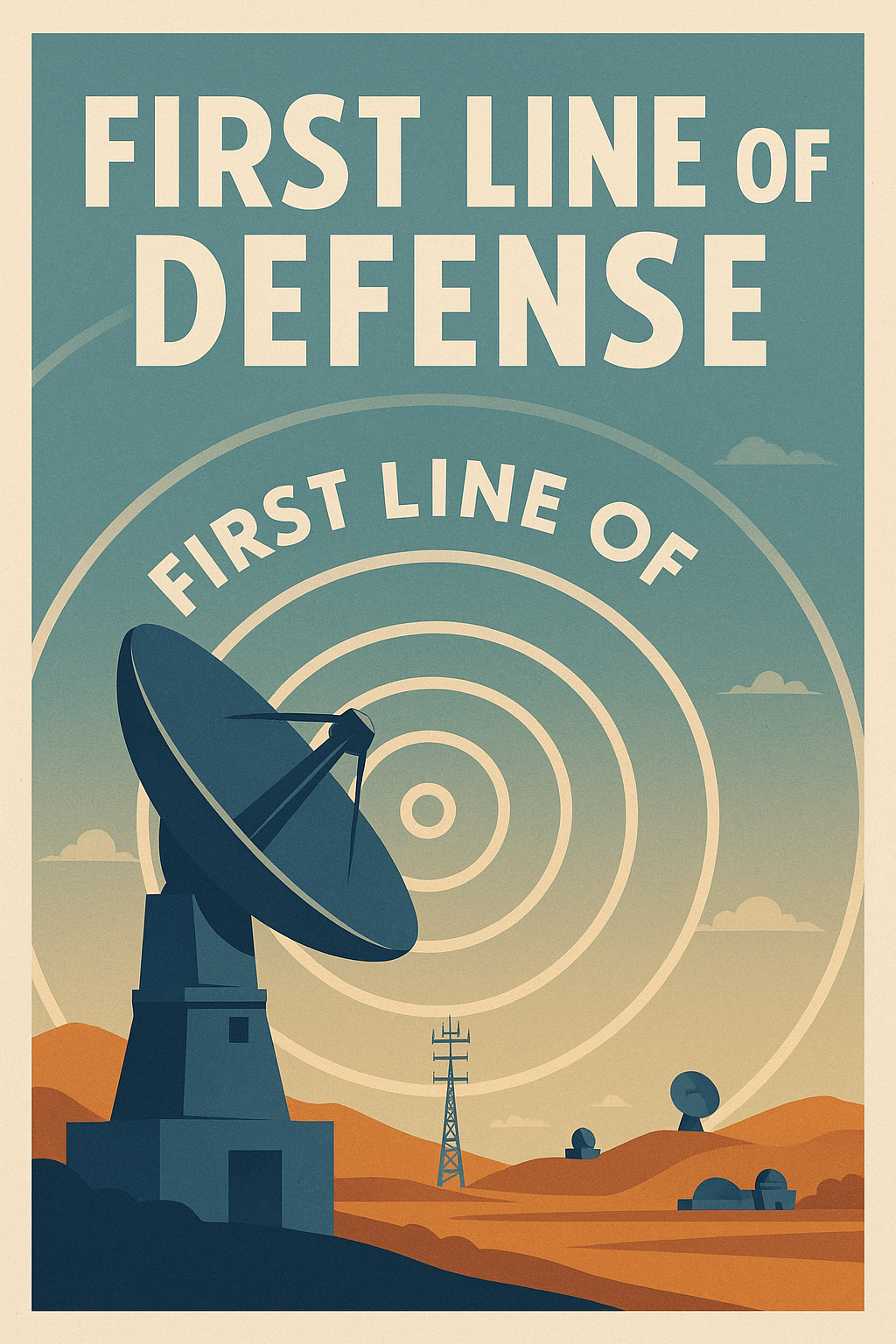
Breaking Down the Branding Blueprint: What Tier 1s Actually Do
To operate at the top of the defense and aerospace food chain, Tier 1 contractors don’t just build advanced systems—they build exceptional brands.
Their branding strategies are finely tuned, systematic, and reinforced by every touchpoint, both internal and external.
Here’s how they structure their branding blueprint to lock in market share, elevate perception, and maintain a sustained competitive edge.
Strong Positioning: Clarity of Value and Specialization
At the heart of every successful Tier 1 brand is crystal-clear positioning.
These organizations define their value in language that resonates with decision-makers, procurement teams, and government stakeholders.
Rather than marketing broad capabilities, they laser in on specialized expertise—hypersonics, ISR systems, autonomous defense tech—articulating not just what they do, but why it matters to national security and strategic outcomes.
Their aerospace marketing clearly differentiates them from Tier 2s by aligning every message to the high-stakes demands of the defense sector.
It’s not about feature lists—it’s about relevance, reliability, and mission alignment.
Thought Leadership: Content That Builds Authority
Tier 1s invest heavily in thought leadership as part of their marketing strategy. They position themselves as architects of the future—not just vendors in the present—through a steady cadence of:
Whitepapers detailing strategic vision, emerging threats, and defense modernization pathways.
Case studies showcasing successful integrations, tech demonstrations, and performance under pressure.
Content marketing built around research, policy alignment, and the impact of their systems on battlefield readiness.
This content is purpose-built for a B2B, high-stakes audience, designed to influence stakeholders at the highest level of both military and commercial command structures.
Trust-Building Through Operational Excellence
Reputation in the aerospace industry is earned through flawless delivery and sustained results. Tier 1s know this, and they use branding to highlight their track record of operational excellence and long-term partnership.
They regularly spotlight customer feedback loops that fuel innovation and transparency.
They publish stakeholder satisfaction scores and KPIs to demonstrate consistency, not just capability.
They showcase third-party certifications, compliance achievements, and successful audits to reaffirm their dependability.
This builds trust and credibility—an intangible yet critical metric in a sector where decisions involve billions of dollars and national security outcomes.
Messaging Consistency Across Long Sales Cycles
One of the most underrated tactics Tier 1s master is message discipline. Across multi-year procurement cycles, brand messaging remains focused, consistent, and aligned with core defense strategies.
Whether in executive briefings, RFP responses, or digital campaigns, their messaging reinforces the same position: “We’re not just capable—we’re essential.” They align their story around the brand—not opportunistically changing the narrative, but reinforcing it through every stage of the buyer journey.
This level of consistency builds memory structure, reinforces perceived value, and helps Tier 1s defend their position year after year—even as technologies evolve and new competitors emerge.
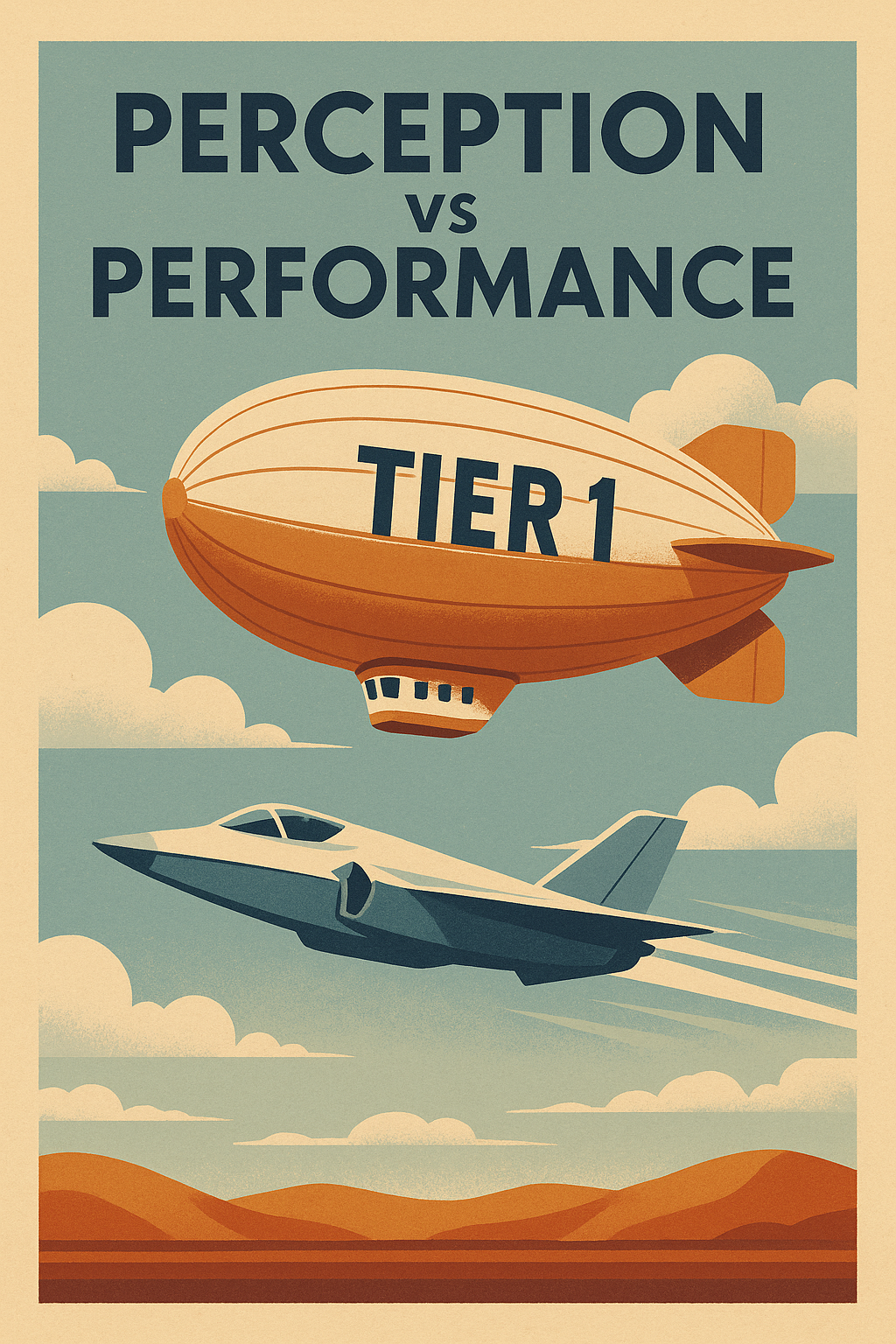
What Tier 2s Must Copy to Build a Strong Brand
Tier 2 aerospace companies are often underestimated not because of inferior capabilities, but because of underdeveloped brands.
Yet the playbook for leveling up exists—and it’s already being executed by Tier 1 contractors. By adopting the right branding strategies, Tier 2s can move beyond transactional roles and position themselves as strategic partners.
Here’s how to do it.
Leverage Stakeholder-Centric Storytelling
The most effective aerospace marketing today doesn’t start with a product—it starts with the stakeholder’s pain, context, and mission.
Tier 2 companies must shift from reactive messaging to proactive, stakeholder-centric storytelling that speaks directly to the decision-makers at primes, OEMs, and defense agencies.
Tell the story of your value not in terms of specs, but in strategic outcomes:
How do your capabilities reduce program risk?
How do you enable faster integration or greater resilience in supply chains?
How are you aligned with broader defense strategies or technological modernization initiatives?
These narratives, when crafted with precision, become the most powerful marketing strategies for Tier 2s looking to climb the ladder.
Build Brand Trust Through Operational Excellence
Trust is the currency of defense and aerospace, and Tier 2s must actively build brand trust by showcasing real-world performance.
Deliver on your promises, then document and amplify it:
Create case studies that highlight high-quality service delivery, especially under pressure.
Share real-time response stories that demonstrate your agility and reliability.
Use project outcomes and customer satisfaction metrics to validate your claims.
This trust-building isn’t just about retention—it’s about increasing visibility and defending your position when bidding against better-known names.
Elevate Digital Presence with B2B Content and AI-Powered Personalization
Many Tier 2s underperform in digital because they underestimate its strategic value in aerospace marketing.
Yet today’s buyers conduct up to 70% of their decision-making online—before speaking to sales. To compete, your digital presence must:
Be clean, clear, and strategically positioned.
Offer valuable content—think whitepapers, webinars, ROI calculators—that speaks directly to B2B procurement needs.
Leverage AI-powered personalization to tailor experiences and outreach to different buyer personas (e.g., program managers, engineers, CFOs).
A website or campaign that sounds like Tier 1 (in clarity, quality, and purpose) will make decision-makers think of you differently—even before the first call.
Conduct a Brand Audit and Benchmark Against Tier 1 KPIs
If you want to ascend, you need to audit your brand like a Tier 1.
This means benchmarking not against your local competitors, but against those already winning the big contracts.
Start by evaluating:
Your messaging consistency across touchpoints.
Your visibility in search, media, and stakeholder networks.
Your use of trust signals—certifications, endorsements, compliance, and performance KPIs.
From there, reverse-engineer Tier 1 playbooks.
Identify what they emphasize in their positioning, how they structure marketing strategies, and what channels they dominate.
Then prioritize investments that close those gaps—around your brand, not just your products.
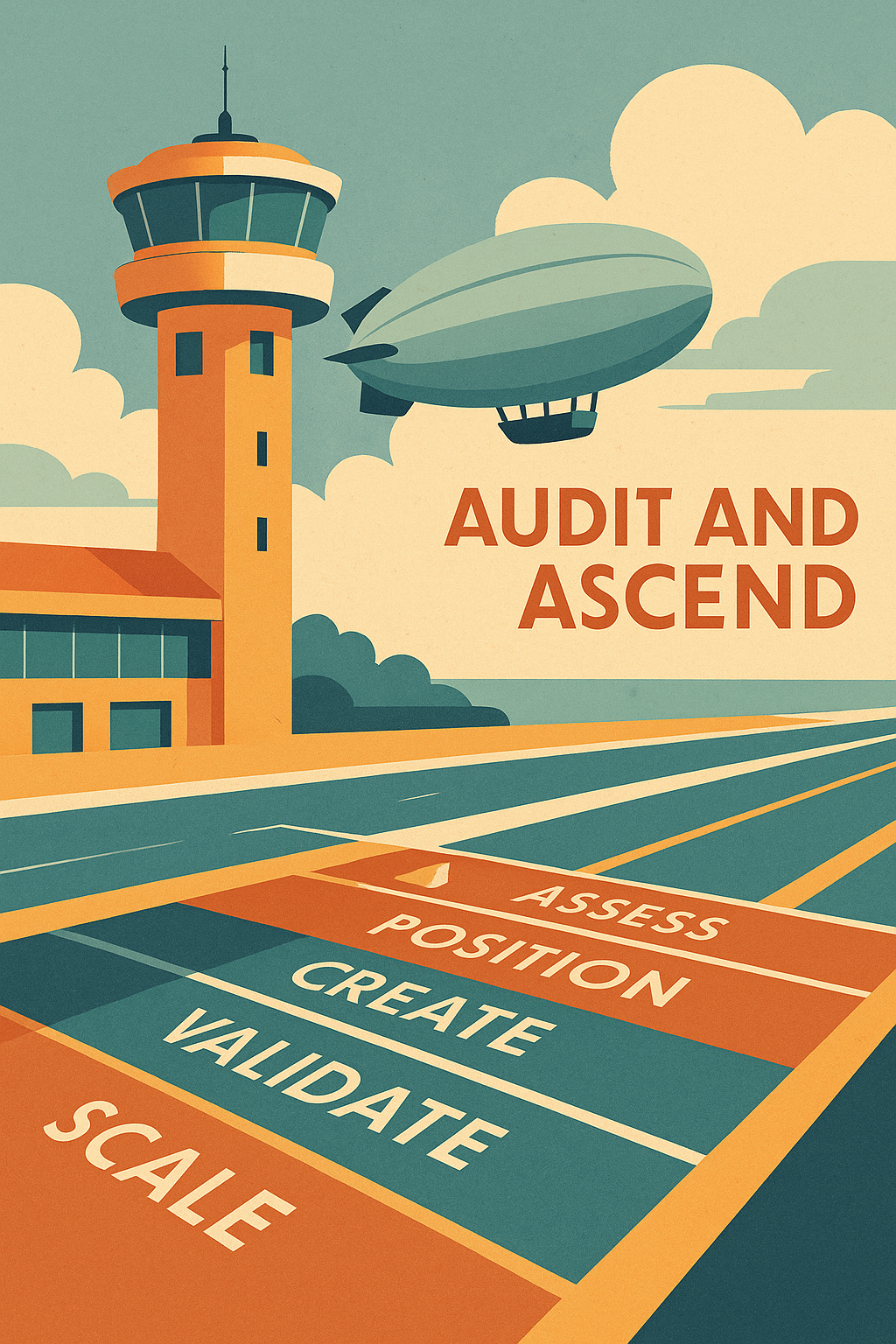
Defensive Marketing Tactics for Tier 2s Facing Market Pressures
In the fiercely competitive world of defense and aerospace, Tier 2 suppliers face increasing pressure—from new market entrants, OEM consolidation, and evolving defense strategies.
When budgets tighten or procurement criteria shift, companies without brand strength are the first to be sidelined.
That’s why defensive marketing isn’t a luxury—it’s an essential practice for defending your position, protecting your market share, and preserving pricing power.
Outmaneuver New Competitors with Strategic Brand Positioning
New entrants often compete on cost, niche innovation, or speed.
To defend your position, you must lead with a strong brand that emphasizes the one thing new players can’t replicate: trust. Reinforce your positioning as a stable, compliant, performance-proven partner.
Use aerospace marketing not to chase trends, but to reinforce your longevity, reliability, and strategic fit.
Key defensive moves include:
Positioning around long-term value, not short-term price.
Highlighting integration experience with Tier 1 contractors and OEMs.
Demonstrating resilience in the face of disruption—supply chain, geopolitical, or regulatory.
This is how you convert your brand into a barrier to entry and elevate your reputation in the eyes of risk-averse stakeholders.
Justify Premium Pricing with KPIs and Performance Metrics
In a market driven by precision and accountability, performance metrics speak louder than promises.
To defend premium pricing, Tier 2s must deploy marketing strategies that amplify operational excellence and data-backed outcomes.
Leverage:
Customer satisfaction scores that highlight success in service delivery.
On-time delivery rates, failure resolution speeds, and compliance records.
Post-project case studies that link performance to mission success.
When presented clearly and contextually, these KPIs not only justify pricing—they differentiate you as a strategic supplier worth paying for. This is a vital tactic in defensive marketing, especially when budget constraints make procurement teams scrutinize every line item.
Leverage Your Brand in Contracts and Lead Generation
Your brand equity can and should be a tool in contract negotiations and lead generation.
A well-regarded brand instills confidence, shortens sales cycles, and reduces perceived risk for buyers.
For Tier 2s, this means aligning all aerospace marketing and business development efforts around three brand signals:
Strategic alignment with current and future defense strategies.
A history of high performance with Tier 1 or OEM partnerships.
A content footprint—whitepapers, briefings, data sheets—that educates, persuades, and builds credibility.
Moreover, your brand should serve as a magnet for qualified leads—especially those evaluating multiple vendors. In a sea of sameness, buyers default to trust. Build your brand around that trust, and your defensive marketing becomes proactive: protecting your base while attracting new opportunities.
Content Marketing as a Competitive Weapon in the Aerospace Sector
In a sector defined by long sales cycles, technical complexity, and highly specialized decision-makers, content marketing is a strategic asset.
For Tier 2 aerospace companies, well-crafted, insight-driven content can be the differentiator that secures meetings, advances conversations, and wins contracts. Done right, content becomes a competitive weapon that supports your position, enhances your brand, and generates high-value revenue opportunities.
Creating Specialized, High-Value Content for Decision-Makers
Your buyers are not scrolling Instagram—they’re program managers, procurement leads, systems engineers, and senior defense officials. They don’t need entertainment; they need clarity. That’s why aerospace marketing must prioritize actionable, deeply relevant content that answers real operational and strategic questions.
Key formats include:
Technical whitepapers detailing interoperability, compliance, or innovations that align with evolving defense strategies.
Stakeholder-focused case studies demonstrating how your solution supported mission success or reduced lifecycle costs.
Video explainers or digital briefings tailored to procurement teams evaluating vendor shortlists.
This content builds your brand around intelligence, foresight, and performance—establishing your firm as more than a vendor, but a thought partner.
Aligning Content to Buyer Intent and Procurement Cycles
Content must meet decision-makers where they are—whether they’re identifying needs, evaluating options, or justifying spend. Aligning your marketing strategies to the buyer journey ensures your content:
Guides early-stage awareness through explainers and industry analysis.
Supports mid-stage consideration with solution briefs and best practices documentation.
Reinforces late-stage decision-making with ROI calculators, compliance matrices, and onboarding guides.
And timing matters. Sync content with procurement cycles, industry events, and regulatory updates to stay relevant and timely. In the defense and aerospace world, content that shows you’re aware of contract windows, defense budget shifts, and RFP timelines provides a subtle but powerful competitive edge.
Scalable, Revenue-Generating Initiatives That Build Brand Equity
For content to become a revenue engine, it must be scalable, measurable, and directly tied to pipeline performance. Here are proven initiatives to consider:
Thought leadership hubs on your website that showcase expert commentary, client success stories, and emerging tech applications.
Targeted email campaigns segmented by buyer role—engineers, finance leads, strategists—each with tailored content that speaks their language.
Lead magnet downloads—such as defense readiness checklists or innovation scorecards—that gather high-intent contacts for nurturing.
Every content touchpoint should serve a dual function: build trust and credibility, and move the prospect closer to action. Over time, this builds brand equity—positioning you as a go-to resource in a sector where buyers place their bets on familiarity, not just features.
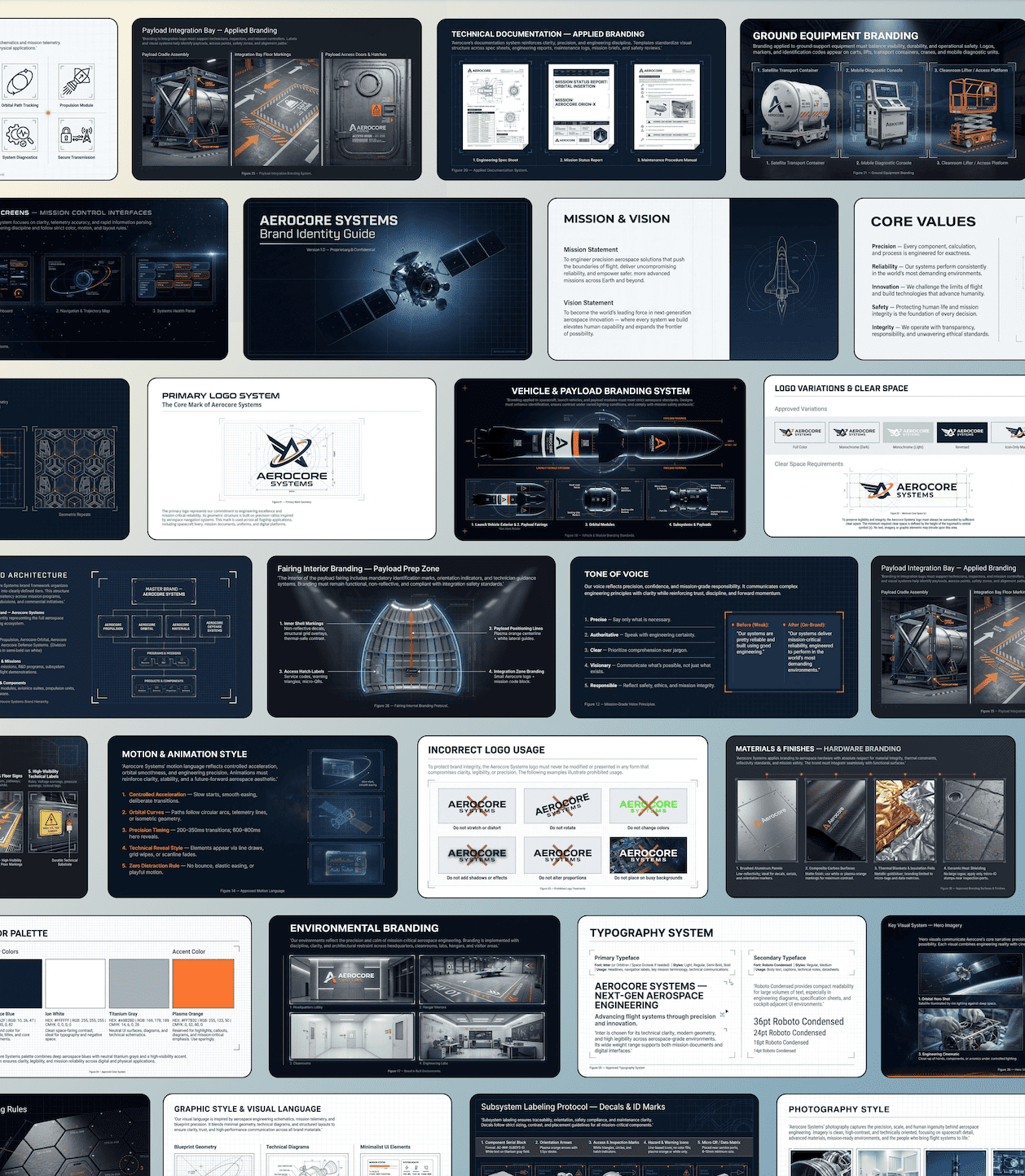
Turning Your Brand Into a Competitive Advantage
When developed intentionally, your brand becomes a living proof of performance, integrity, and alignment with long-term defense strategies.
For Tier 2 suppliers, transforming your brand into a true competitive advantage is the next-level move that shifts your role from vendor to indispensable partner.
From Reactive Supplier to Proactive Brand
Too many Tier 2 companies operate in a reactive mode—waiting on RFQs, adjusting last-minute to specs, and hoping their performance speaks for itself.
But the Tier 1 mindset is different: they lead with brand. They shape perception before the RFP even hits the inbox.
To make this shift:
Define a brand position that clearly articulates your strategic relevance—not just your technical competence.
Lead conversations with your unique value narrative, not just compliance checklists.
Invest in aerospace marketing that builds recognition and readiness before the buyer even knows they need you.
This is the foundation of defensive marketing: being top of mind before a competitor even enters the conversation.
Building Trust and Credibility in a Regulated Market
Trust is not built through one great project—it’s earned through consistent delivery, transparent communication, and alignment with stakeholder priorities.
In the highly specialized and tightly regulated world of defense, your brand becomes a beacon of assurance when it signals:
Certification readiness and audit success.
Regulatory compliance and export control expertise.
Long-standing partnerships with Tier 1s and OEMs.
Marketing strategies that highlight these trust signals help reduce perceived risk for procurement teams and program officers. In doing so, they strengthen your market position and build defensibility against upstart competition.
Branding as a Driver of Loyalty and Long-Term ROI
A powerful brand does more than attract—it retains. Companies that have built trust around their brand find that customer relationships become stickier, renewal conversations easier, and account growth more organic. That’s because the brand serves as a proxy for experience, making future deals faster and less cost-intensive to close.
This compounds your ROI across every stage of the customer lifecycle:
Reduced CAC (Customer Acquisition Cost) from inbound interest and brand-driven referrals.
Higher LTV (Lifetime Value) through deeper engagements and program expansions.
Improved margins by justifying premium pricing based on perceived value, not just deliverables.
In essence, a brand well-built and well-defended gives you a competitive edge that pricing, tech specs, and even performance alone can’t match.
Case Studies and Success Patterns from Tier 1s
If you want to understand the true power of brand in the defense and aerospace sector, look at how Tier 1 contractors use it not only as a growth engine but as a stabilizing force in uncertain times.
Their success stories offer a blueprint of best practices for scalable growth, stakeholder influence, and strategic resilience—especially relevant for Tier 2s navigating the same terrain with fewer resources.
How Branding Enables Scalable Growth
Take Lockheed Martin, for instance. Beyond its technological dominance, its brand is built around reliability, long-term vision, and partnership.
Its aerospace marketing efforts are not flash but substance: whitepapers, thought leadership platforms, supplier symposia, and deep policy alignment.
These efforts support its position not only in aerospace engineering but in the national defense narrative itself.
Or consider BAE Systems, which has consistently used branding to scale into new markets. Their strategic content—ranging from cyber-defense webinars to international trade briefings—targets highly specific stakeholder groups. The brand speaks fluently in the language of decision-makers, aligning with both technical and geopolitical contexts. That’s how you drive customer loyalty and expansion simultaneously.
The common thread?
These firms don’t just build tech—they build trust at scale. Their brand strategies amplify perceived value, reduce sales friction, and secure buy-in from C-suite to engineering floor.
Branding as a Buffer During Procurement Downturns
Brand strength doesn’t just drive growth—it mitigates risk. During defense budget contractions, Tier 1s with high brand equity don’t disappear from procurement radars.
Instead, their brands function as assurance mechanisms. When governments and OEMs face pressure to cut costs, they still prioritize vendors with proven reputations, clear deliverables, and a history of mission success.
For example:
Northrop Grumman maintained stability during cyclical cuts by positioning its brand around strategic deterrence and long-term systems architecture—key themes in ongoing defense strategies.
Raytheon Technologies navigated volatile geopolitical dynamics by doubling down on communications around continuity, multi-domain integration, and allied collaboration—branding narratives that reinforced their relevance even when programs paused.
These companies leveraged their strong brands not just to survive market dips, but to gain market share while competitors retreated.
Actionable Takeaways for Tier 2s
From these success patterns, Tier 2s can extract clear, actionable lessons:
Use branding to frame your value in strategic—not just technical—terms.
Prioritize content that builds trust during times of uncertainty.
Maintain messaging discipline to defend relevance through market fluctuations.
Branding, when deployed as a strategic asset, becomes your greatest defense and your most scalable growth lever. And that’s a competitive advantage no downturn can erase.
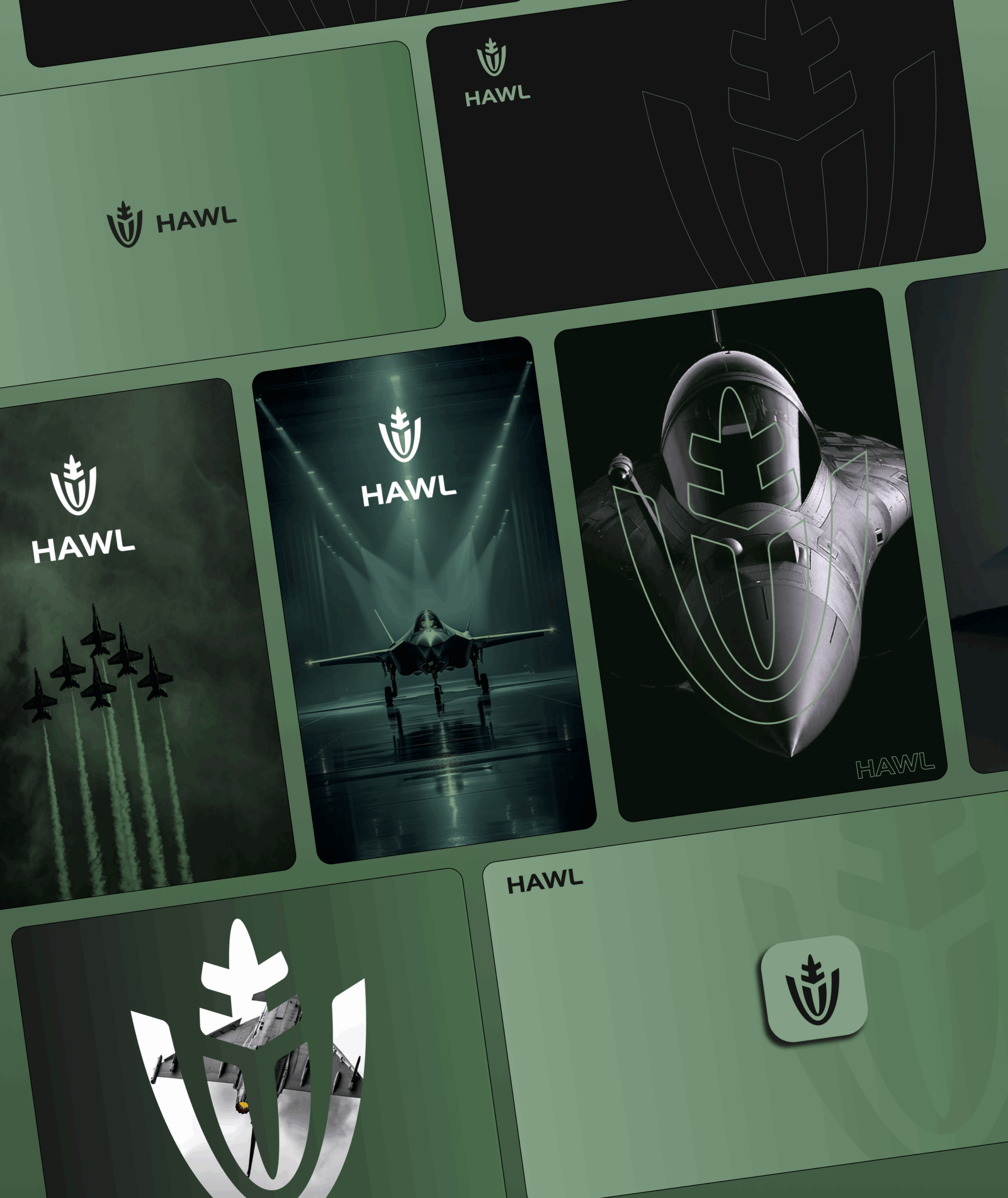
A Framework for Tier 2 Brand Evolution
If Tier 1 contractors treat branding as a strategic asset, then Tier 2s must treat brand development as a mission-critical initiative.
Whether you’re aiming to expand upmarket, lock in strategic significance, or simply defend your current accounts, a proactive branding roadmap is essential. Here’s a five-step framework to evolve your Tier 2 brand into one that commands respect—and results—like a Tier 1.
1. Audit Your Current Brand Assets
Start by taking a clear-eyed look at your brand as it stands today. This includes everything from your website and pitch decks to your digital presence and stakeholder materials. Ask:
Does your messaging clearly communicate your position in the market?
Do your visuals and tone reflect your technical sophistication and operational reliability?
Are you consistently reinforcing value in ways aligned with current defense strategies?
Conduct this brand audit not just internally, but with customer input and competitive benchmarks. Compare yourself to Tier 1 contractors and industry leaders, not just local peers. That’s how you identify branding gaps—and opportunities for evolution.
2. Define Your Position and Differentiation
Effective branding starts with knowing exactly what makes you different. What is your unique role in the defense and aerospace ecosystem? Why are you mission-critical? This step is about developing brand clarity that becomes the foundation of all aerospace marketing.
Use these questions to define your brand position:
What problems do you solve that others don’t?
What specialized expertise do you bring to complex programs?
What reputational capital have you built with existing clients or Tier 1 partners?
This is your strategic core. Build your marketing strategies around it.
3. Map Content to the Buyer Journey
Once your position is set, the next move is to develop a content strategy that aligns with how defense buyers think, research, and decide. Your aerospace marketing must support every stage:
Top-of-funnel: thought leadership content, trend reports, and technical explainer videos.
Mid-funnel: solution briefs, whitepapers, ROI narratives, and integration overviews.
Bottom-of-funnel: testimonials, compliance checklists, and procurement readiness packages.
This buyer-aligned content builds familiarity, accelerates trust, and supports a more defensive marketing posture as you scale.
4. Establish Credibility Through Thought Leadership
If Tier 1s are known for anything beyond size, it’s their perceived authority. As a Tier 2, you need to establish credibility by showing—not just telling—why you deserve a seat at the strategic table.
Start building an in-house content engine focused on:
Technical whitepapers tied to emerging defense strategies.
Customer success stories that demonstrate impact under pressure.
Webinars, interviews, and executive commentary that shape industry discourse.
Doing this consistently positions your brand around your expertise, not just your offerings.
5. Monitor KPIs and Adjust in Real Time
Brand building is not set-and-forget—it’s a living system. Use key performance indicators (KPIs) to monitor impact across areas like:
Web traffic from qualified buyers.
Content engagement rates by stakeholder segment.
Influence on sales velocity, conversion rates, and deal size.
Adapt your strategy in real time, based on what moves the needle. This actionable, performance-driven approach turns your brand into a measurable asset—and a true competitive advantage.
Last Words
Whether you’re a Tier 1 contractor defending billions in program share or a Tier 2 supplier fighting for strategic visibility, your brand is your first line of defense.
More than a logo or tagline, it’s the totality of your promise, your proof, and your positioning. And when built with precision, it becomes a force multiplier—shaping perceptions, reducing friction, and signaling to stakeholders that you’re not just capable, but indispensable.
Let’s recap the essentials for any highly specialized firm looking to scale up, stand out, or survive market shifts:
Positioning clarity ensures you communicate the right value to the right buyer at the right time.
Aerospace marketing aligned to procurement cycles creates momentum and relevance.
Defensive marketing strategies help you retain market share and credibility even during downturns.
Actionable branding tactics—from content to KPIs—turn your brand into a living, revenue-generating asset.
In a market governed by compliance, complexity, and consequence, a strong brand is not optional. It’s your edge. Your signal of trust. Your long-term competitive advantage.
So whether you’re looking to challenge the incumbents or ascend from Tier 2 to Tier 1, the time to invest around your brand is now. Build it with intention. Defend it with strategy. Grow it with action.
Your brand isn’t what you say it is—it’s what your buyers believe. Make it undeniable.

